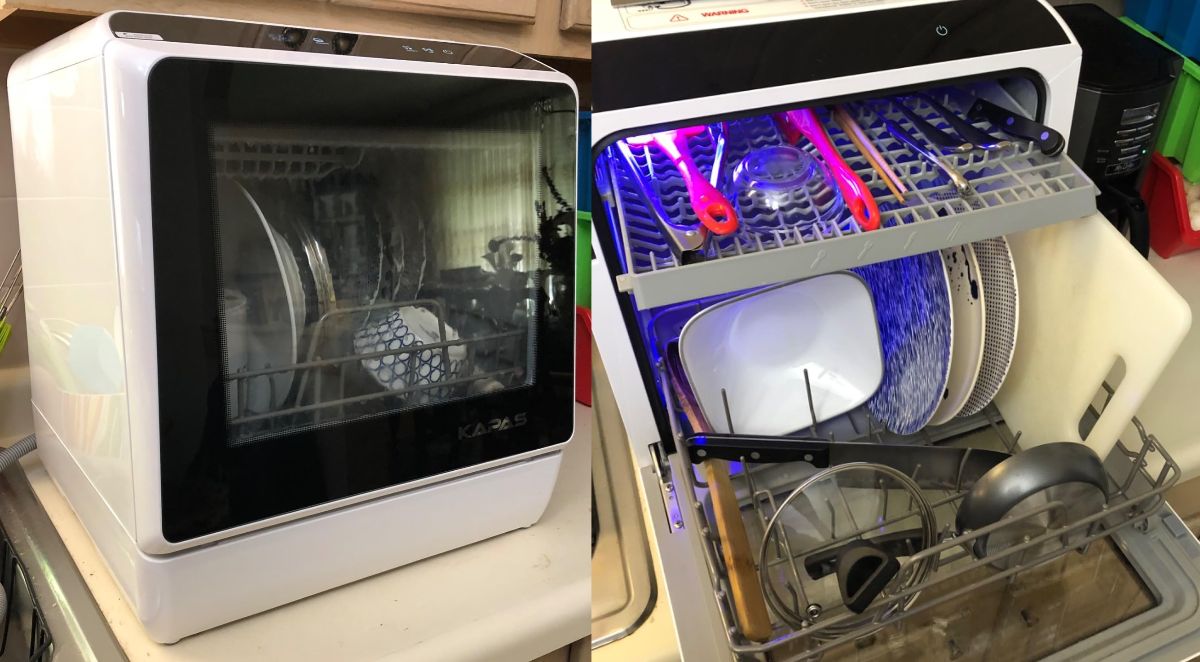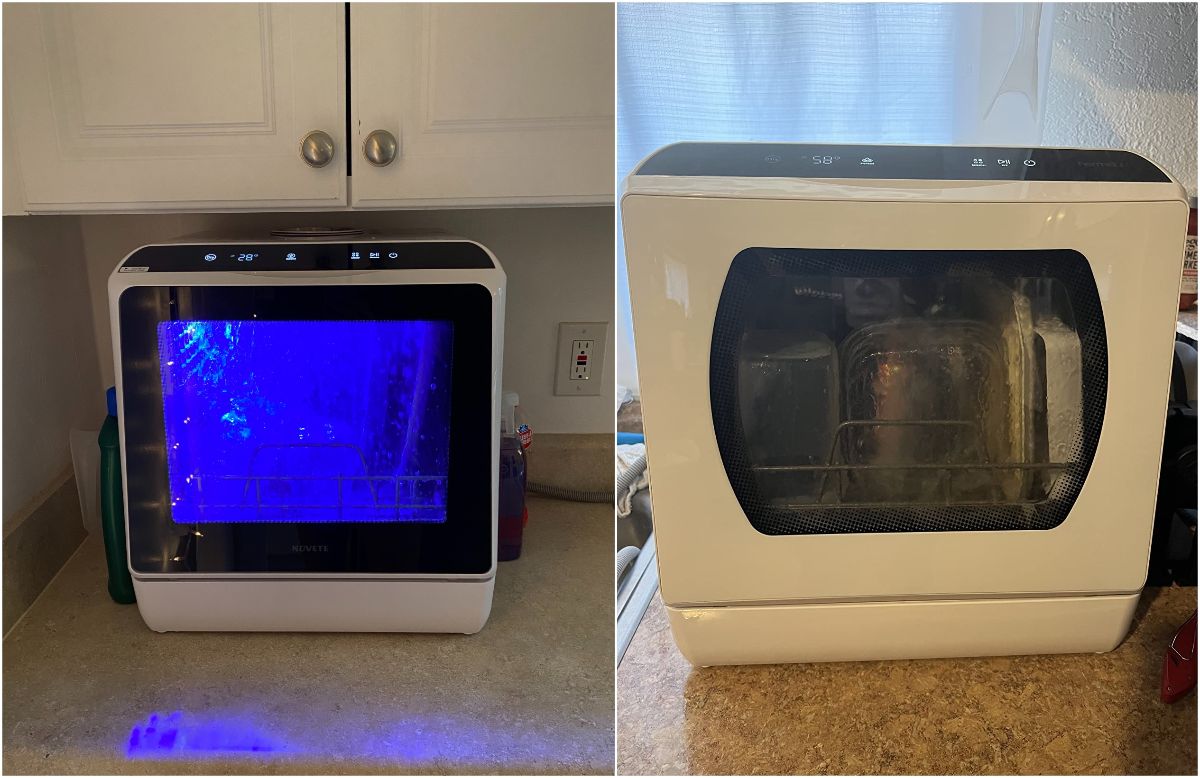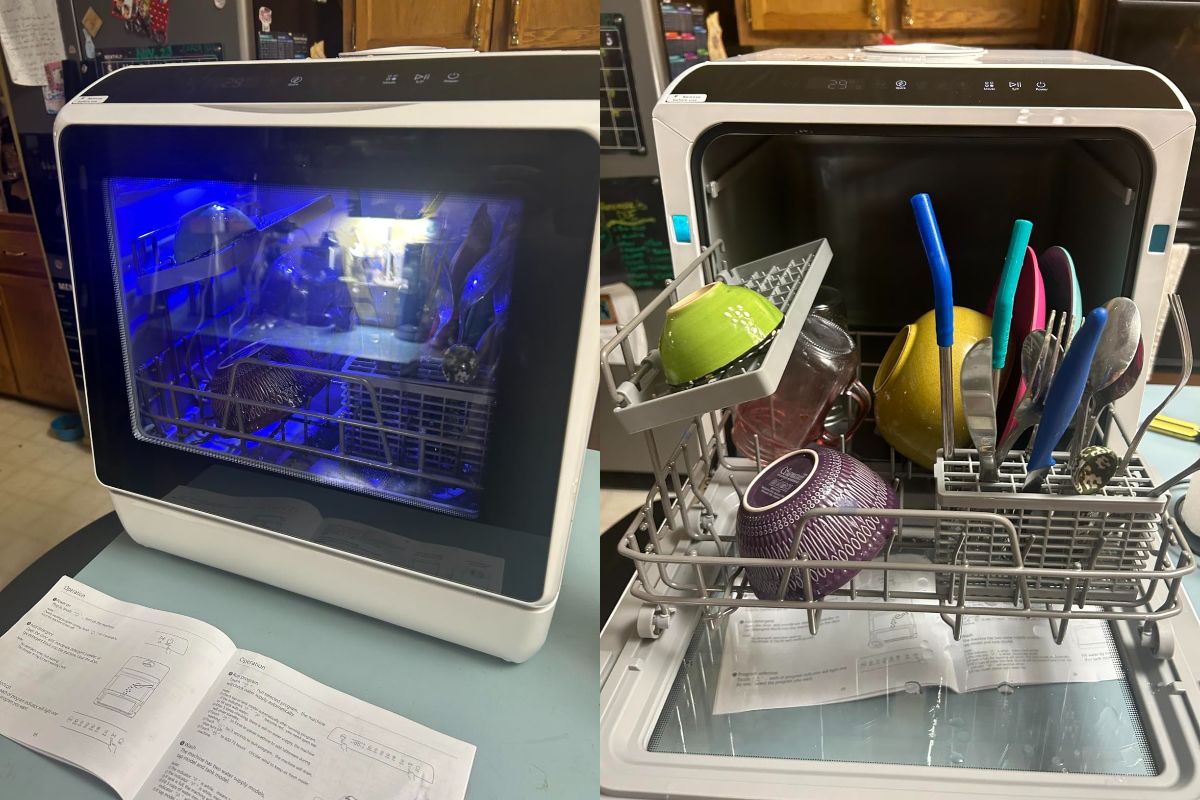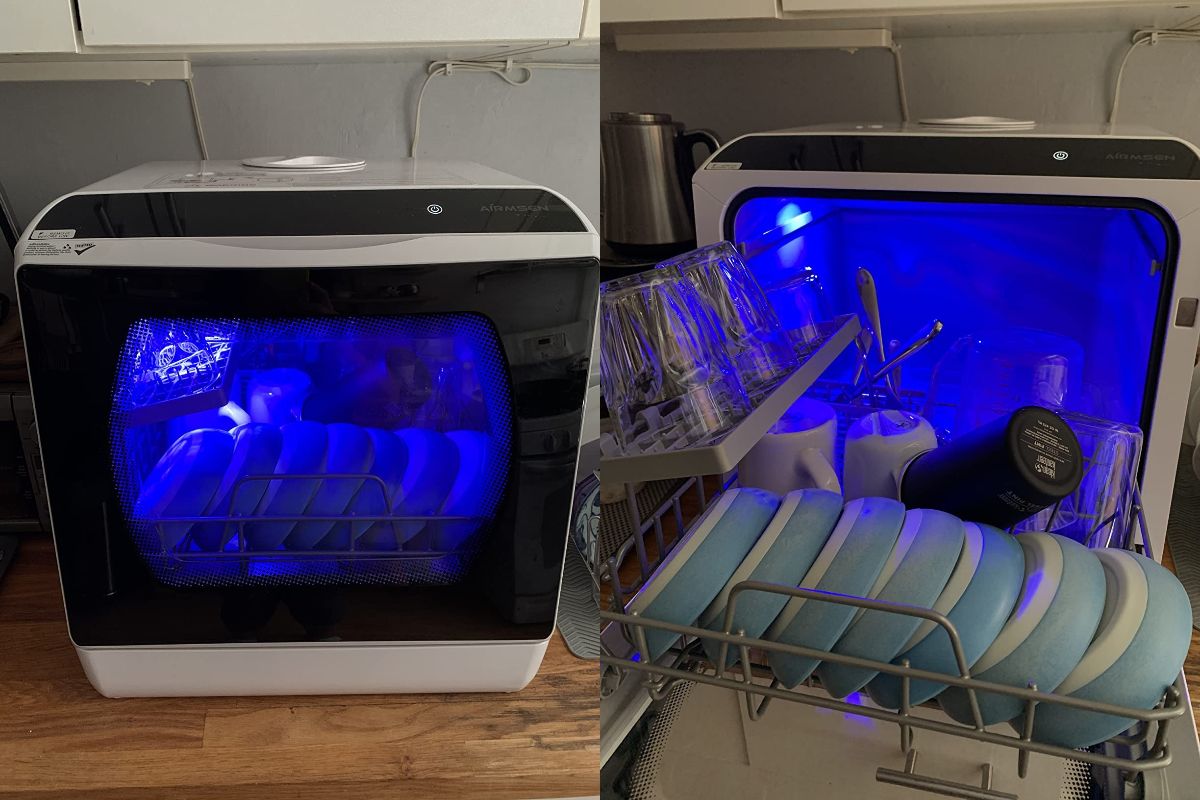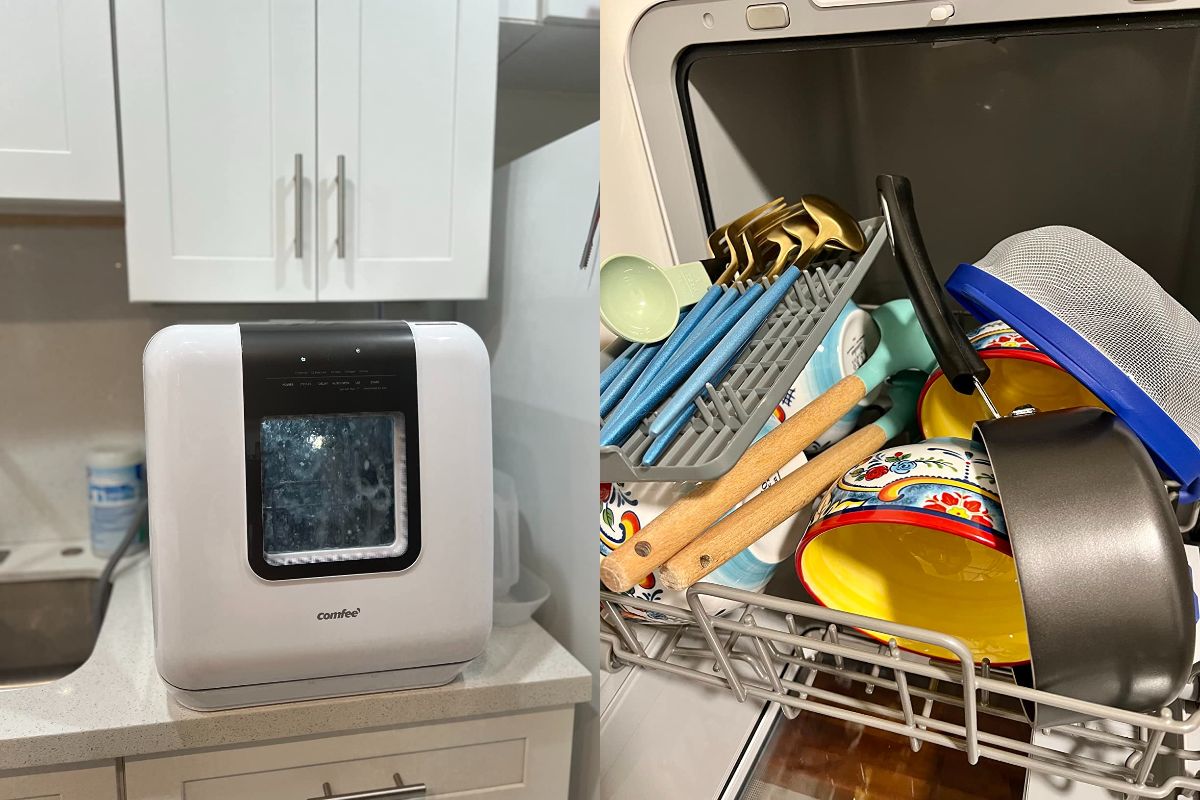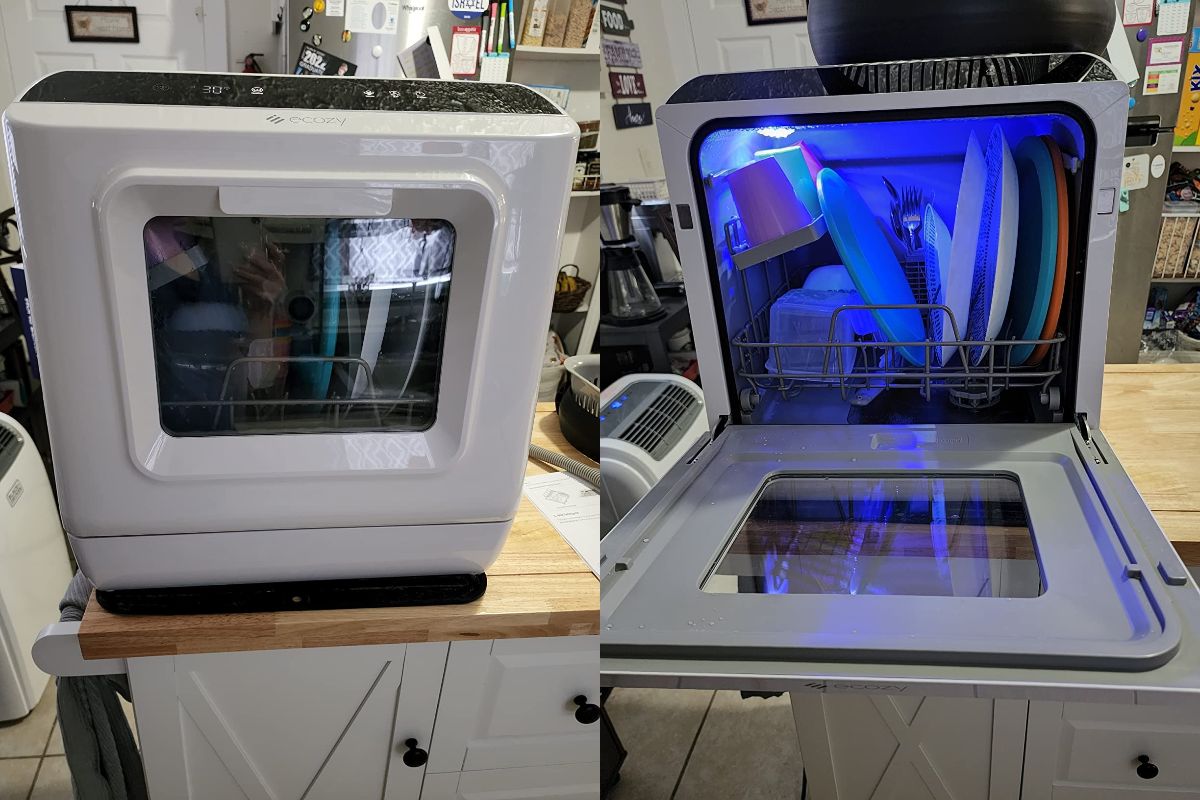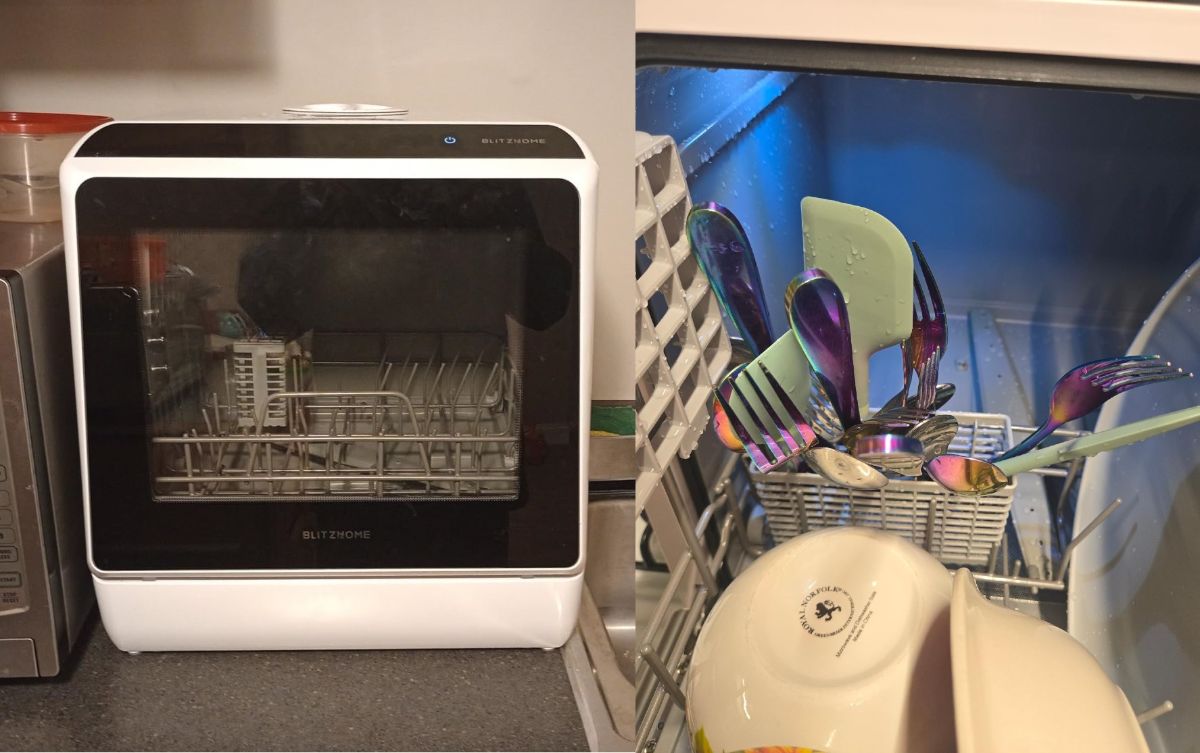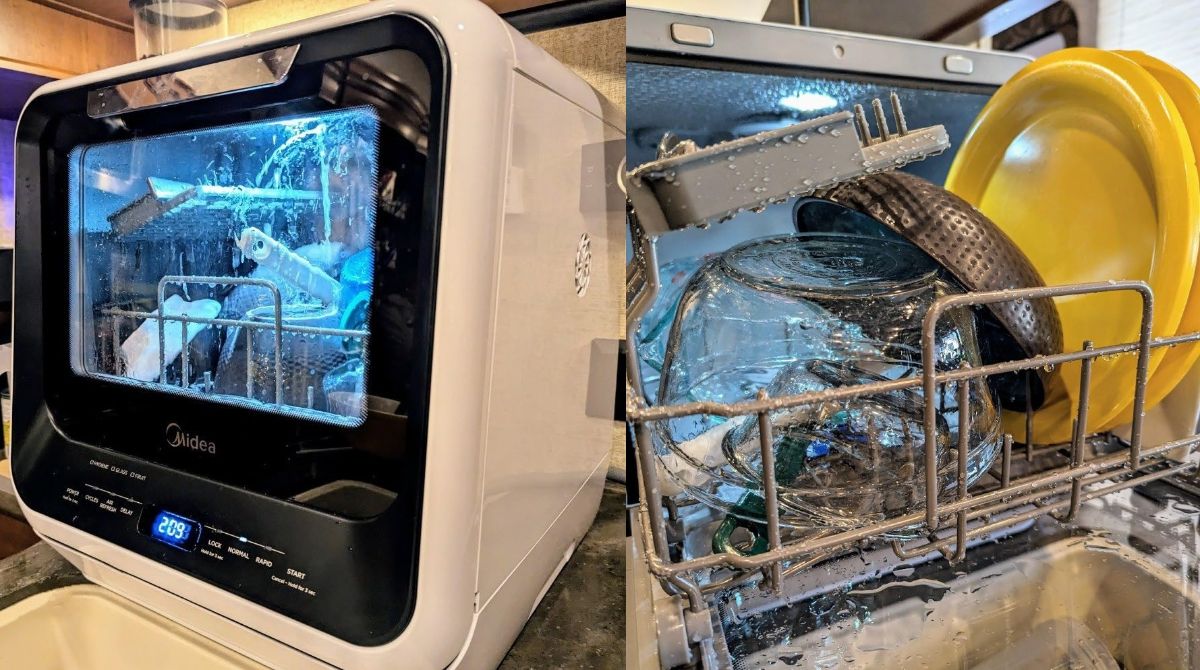As someone who tests and reviews appliances regularly, I’m often asked about compact dishwashers. For renters, small households, or anyone without the option of installing a full-size dishwasher, countertop models like the KAPAS Countertop Dishwasher are becoming increasingly popular. I’ve had the opportunity to use this unit extensively and compare it with other small dishwashers on the market. What follows is my in-depth experience along with insights from other long-term users.
Setup and First Impressions
The KAPAS arrives well-packed and is lighter than it looks, making it manageable to lift onto a counter. At just over 18 inches tall, it fits under most cabinets, though it can be a tight squeeze. If you’re planning to keep it under cabinetry, make sure you have at least 19 inches of clearance, especially since the water tank cap adds a little height.
There are two ways to supply water: connect it to a faucet or manually fill the built-in 5-liter tank. I prefer the manual method since it avoids tying up the sink, though I did find the included filling pitcher awkward. Some users solve this by using a sink sprayer or even pre-filling the tank the night before so the dishwasher is ready to go at the press of a button. That convenience really adds up.
The drain hose sits in the sink, but the suction cup mount doesn’t always hold well. A simple tweak, like securing it with a clip or letting it rest in place, fixes the issue. Overall, setup is easy and doesn’t require tools.
Capacity and Performance
Let’s address the most common concern first: this is a small dishwasher, and you’ll need to be realistic about its capacity. Standard dinner plates larger than 10 inches won’t fit unless you remove the top utensil rack. Most users, including myself, end up replacing that rack with a small cutlery basket, which frees up space for bigger items like pasta bowls, mugs, or even small pans.
That said, the KAPAS is surprisingly versatile. I’ve managed to fit the dishes for a two-person dinner, including plates, cups, and cutlery, in one load. With careful stacking, you can also wash mixing bowls, smaller pots, and food prep tools. For larger families, it’s better suited for multiple cycles per day.
Performance-wise, the KAPAS punches above its weight. The water heats up to a sanitizing temperature, and the spray arms do a thorough job of cleaning. Even dishes with dried-on food usually come out spotless without pre-rinsing. Occasionally, if something is badly burnt on, you may need to rinse or run it again, but that’s true of most dishwashers.
There’s also a fruit and vegetable wash cycle, which is more useful than I expected. I often toss in produce after grocery trips, sometimes adding a bit of baking soda in the detergent compartment for a deeper clean. It’s a small feature, but it saves time and gives peace of mind about food hygiene.
Looking for more top-rated options? Check out our expert picks for the Best Dishwashers that deliver sparkling results every time.
Maintenance and Troubleshooting
One of the most important tips I can give is to clean the filter regularly. Like other countertop dishwashers, the KAPAS has a small trap that collects food debris. If left unchecked, it can cause odors or leave residue on dishes. A quick rinse under the tap solves the problem.
Some users have reported the spray arm occasionally sticking. In my experience, it’s usually due to food particles or improper placement of dishes. A quick adjustment or cleaning gets it working again.
The drying cycle is adequate but not perfect. After an hour of heated drying, there are often still a few drops of water left on cups or in crevices. The placement of dishes really matters here. I’ve learned to leave the door slightly open after the cycle, which lets steam escape and speeds up air drying. Others prefer to skip the drying function altogether and towel-dry.
Another common concern is the longevity of the dish rack. Because it’s metal, leaving it damp inside the humid chamber could lead to rust over time. I’ve adopted the habit of towel-drying the rack after each cycle or pulling it out to air dry, which should help extend its lifespan.
Long-Term Use
I was curious how this little dishwasher would hold up after months of daily use, and I’ve been impressed. Users who have run it almost every day for two years report it’s still going strong. In fact, many describe it as “life-changing,” especially for those who dislike washing dishes or live with depression, where a sink full of dirty dishes can become overwhelming.
I’ve also tested it with different detergents. Pods tend to be too concentrated for the KAPAS, leaving residue, while liquid or powder detergents in small amounts work best. Adding a few drops of rinse aid during the cycle also helps prevent streaking on glassware.
Noise is another pleasant surprise. While not silent, it’s much quieter than expected. You can run it at night without disturbing sleep in a small apartment, which is a huge plus.
Pros and Cons
Pros:
- Compact size, fits in most kitchens without installation
- Two water supply options (faucet connection or top-fill tank)
- Cleans thoroughly, even on quick wash settings
- Fruit and vegetable wash cycle adds extra value
- Quiet operation
- Encourages better kitchen habits by keeping the sink clear
Cons:
- Limited capacity, struggles with larger plates and cookware
- Drying cycle leaves some items damp
- Utensil rack design is inconvenient and often needs replacing
- Suction cup for the drain hose is unreliable
- Potential for dish rack rust if not dried properly
Not sure which model is right for you? Read our complete Dishwasher Buying Guide to find the perfect match for your kitchen.
Final Verdict
The KAPAS Countertop Dishwasher is not perfect, but for what it is, it’s fantastic. If you’re expecting it to replace a full-size dishwasher for a family of five, you’ll be disappointed. But if you live in an apartment, a small household, or simply hate hand-washing dishes, this little machine is a game-changer.
It saves water compared to hand washing, sanitizes dishes far more effectively than a sponge, and adds convenience to daily cooking. Yes, you’ll need to learn its quirks, like removing the utensil rack for bigger items, cleaning the filter often, and managing the drying cycle but those adjustments feel minor compared to the benefits.
I’d personally rate it a solid 4.5 out of 5 stars. For anyone on the fence, my advice is simple: if you have the counter space and the budget, buy it. You’ll quickly wonder how you ever managed without it.
